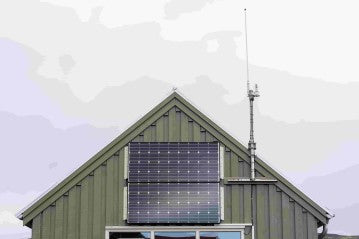
As the demand for renewable energy continues to grow, more and more individuals are turning to solar power as a reliable and sustainable solution. When setting up a solar energy system, it's essential to understand the importance of properly sizing the wires that connect the solar charge controller to the battery bank. In this guide, we will explore the significance of wire size, its impact on system performance, and provide you with practical tips for selecting the appropriate wire gauge. So, let's dive in and demystify the world of charge controller to battery wire sizing!
1. The Role of a Solar Charge Controller
Before delving into wire sizing, let's briefly discuss the role of a solar charge controller. This critical component acts as a regulator between your solar panels and the battery bank, ensuring the efficient and safe charging of batteries. It prevents overcharging, over-discharging, and protects the batteries from potential damage, thereby maximizing their lifespan.
2. Importance of Proper Wire Sizing
When it comes to charge controller to battery wire sizing, one size does not fit all. The wire size directly affects the performance and safety of your solar energy system. Insufficient wire gauge can lead to voltage drop, overheating, and even fire hazards. Conversely, using an excessively large wire size can be costly and unnecessary. Therefore, it's crucial to strike the right balance to ensure optimal system efficiency.
2.1 Voltage Drop and Efficiency:
Voltage drop refers to the loss of electrical energy that occurs when current flows through a wire with resistance. In the context of a solar energy system, voltage drop can negatively impact the overall performance and efficiency of your system. Larger wire gauges have lower resistance, resulting in reduced voltage drop and more efficient power transfer. Conversely, smaller wire gauges introduce higher resistance, leading to increased voltage drop and energy losses.
2.2 Safety Considerations:
Another critical aspect of wire sizing is safety. Using wires that are too small for the current flow can cause them to overheat, potentially leading to insulation damage and fire hazards. By selecting the appropriate wire size, you ensure that the wires can handle the current without excessive heating, guaranteeing the safety and longevity of your system.
3. Selecting the Right Wire Gauge
Now that we understand the importance of wire sizing, let's explore how to select the right wire gauge for your solar energy system.
3.1 Determine the Maximum Current:
The first step is to determine the maximum current that will flow through the wires. This value depends on the solar charge controller's specifications and the battery bank's capacity. Refer to the manufacturer's documentation or consult a professional to obtain accurate information.
3.2 Calculate the Wire Size:
Once you have determined the maximum current, you can use a wire size calculator or refer to the American Wire Gauge (AWG) chart to find the appropriate wire gauge. It's recommended to choose a wire gauge that can handle at least 125% of the maximum current to account for future expansions or system upgrades.
3.3 Consider Wire Length and Ambient Temperature:
The wire length and ambient temperature also play a role in determining the wire size. Longer wire runs introduce more resistance, resulting in higher voltage drop. Therefore, it's essential to consider the distance between the charge controller and battery bank and select a wire gauge that compensates for this additional resistance. Moreover, if your system is installed in a high-temperature environment, it's advisable to choose a wire size that can handle the elevated temperatures without significant losses.
Conclusion
Proper wire sizing is a critical aspect of setting up a solar energy system. By selecting the appropriate wire gauge for the connection between the solar charge controller and battery bank, you ensure optimal system performance, minimize voltage drop, and promote safety. Remember to consider the maximum current, wire length, and ambient temperature when determining the wire size. If you're unsure about the calculations or need assistance, it's always advisable to consult a professional. With the right wire sizing, you can harness the full potential of solar energy and enjoy a reliable and efficient renewable power source for years to come.


0 Kommentare